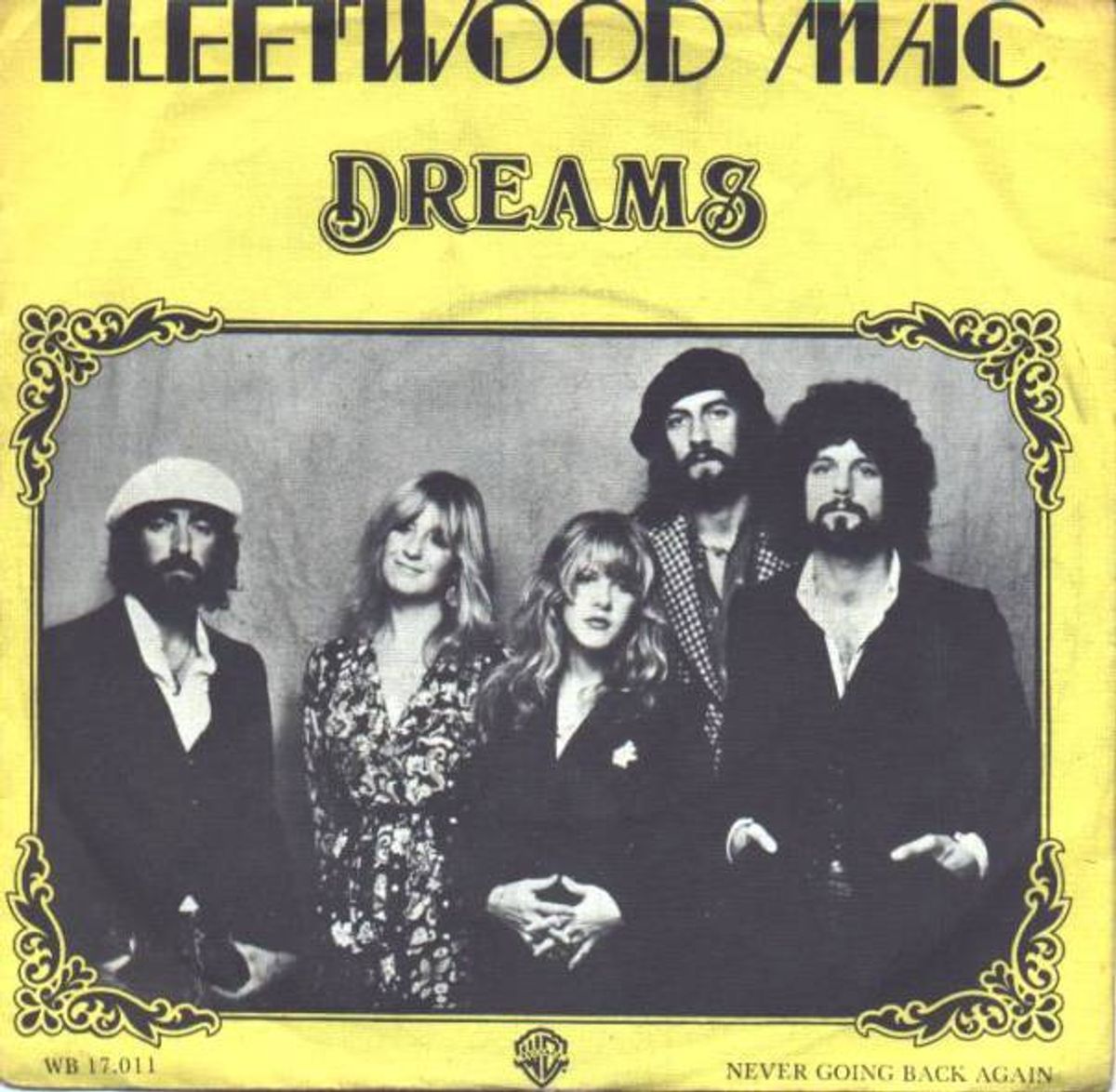#Dromenland - Fleetwood Mac - Dreams (1976)

“Slapen is verloren tijd, behalve als je droomt”, zei een wijze. Daarom een weekje songs waarin de droom (of de nachtmerrie) heerst.
Om de week af te sluiten misschien presenteren we de meest onderkoelde droomsong ever. Alleen al die intro met de binnentokkelende bas en dan die welgemikte crash- en drumslagen en hopla, vertrokken is die heerlijk wegmeanderende popsong. Intussen kent iedereen de grillige, amoureuze en relationele tribulaties, gekoppeld aan een redelijk bovenmatig gebruik van het “witte waspoeder”, waarbij iedereen zijn bijdrage afzonderlijk klaarstoomde.
Dreams werd vooral door Stevie Nicks geschreven in de studio, terwijl in de belendende studio Sly Stone driftig aan het funken was. Ze mocht zijn groot bed in de vorm van een halve cirkel gebruiken als inspiratie voor het neerpennen van haar droomsequenties. Vreemd genoeg was dit de enige nummeréénhit voor Fleetwood Mac in de Verenigde Staten, maar dat was natuurlijk omdat de halve natie het al op lp had, aangezien de verkoop van 'Rumours' het stadium van de zoete broodjes al lang was voorbijgesneld.
De tekstlijn "Players only love you when they're playing", was rechtstreeks gericht op inmiddels ex-echtgenoot en bandgenoot Lindsey Buckingham in een reactie op diens tirade in Go You Own Way. Stevie Nicks: "It was the fairy and the gnome. I was trying to be all philosophical. And he was just mad. I remember the night I wrote Dreams. I walked in and handed a cassette of the song to Lindsey. It was a rough take, just me singing solo and playing piano. Even though he was mad with me at the time, Lindsey played it and then looked up at me and smiled. What was going on between us was sad. We were couples who couldn't make it through. But, as musicians, we still respected each other - and we got some brilliant songs out of it."
Christine McVie, die de Hammond en Fender Rhodes speelt op Dreams, vult aan: "Dreams developed in a bizarre way. When Stevie first played it for me on the piano, it was just three chords and one note in the left hand. I thought, This is really boring, but the Lindsey genius came into play and he fashioned three sections out of identical chords, making each section sound completely different. He created the impression that there's a thread running through the whole thing."
